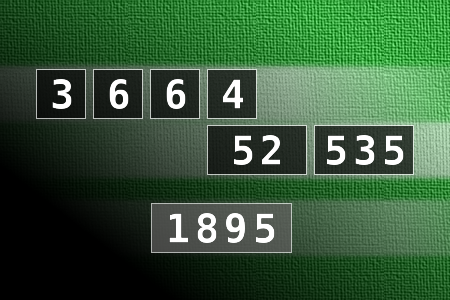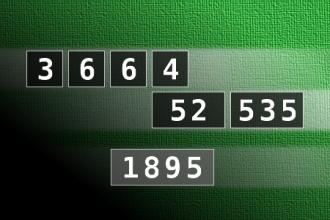Calculate the number 1895
NUMBERMANIA: Calculate the number 1895 using numbers [3, 6, 6, 4, 52, 535] and basic arithmetic operations (+, -, *, /). Each of the numbers can be used only once.Correct answers: 0
#brainteasers #math #numbermania


